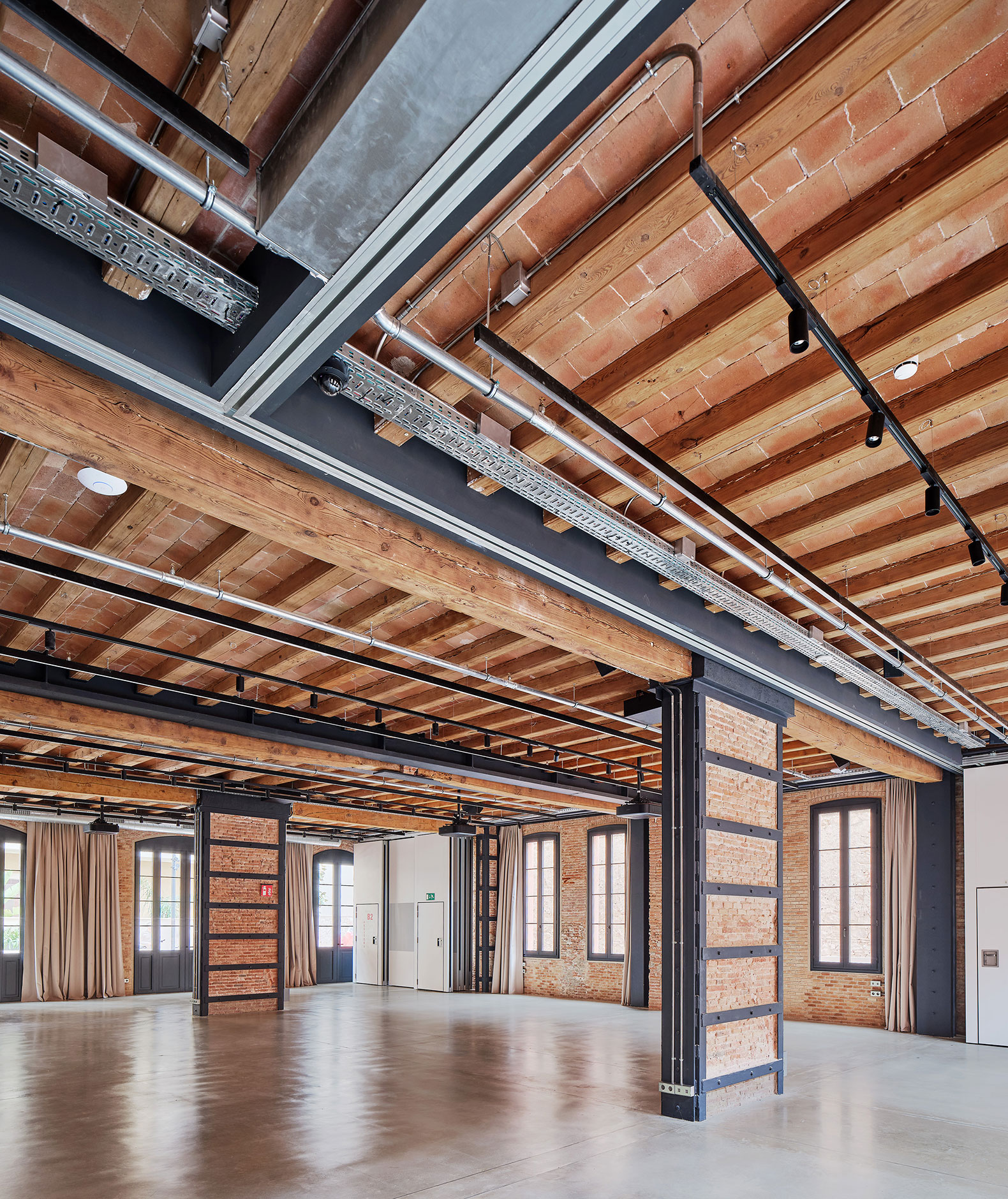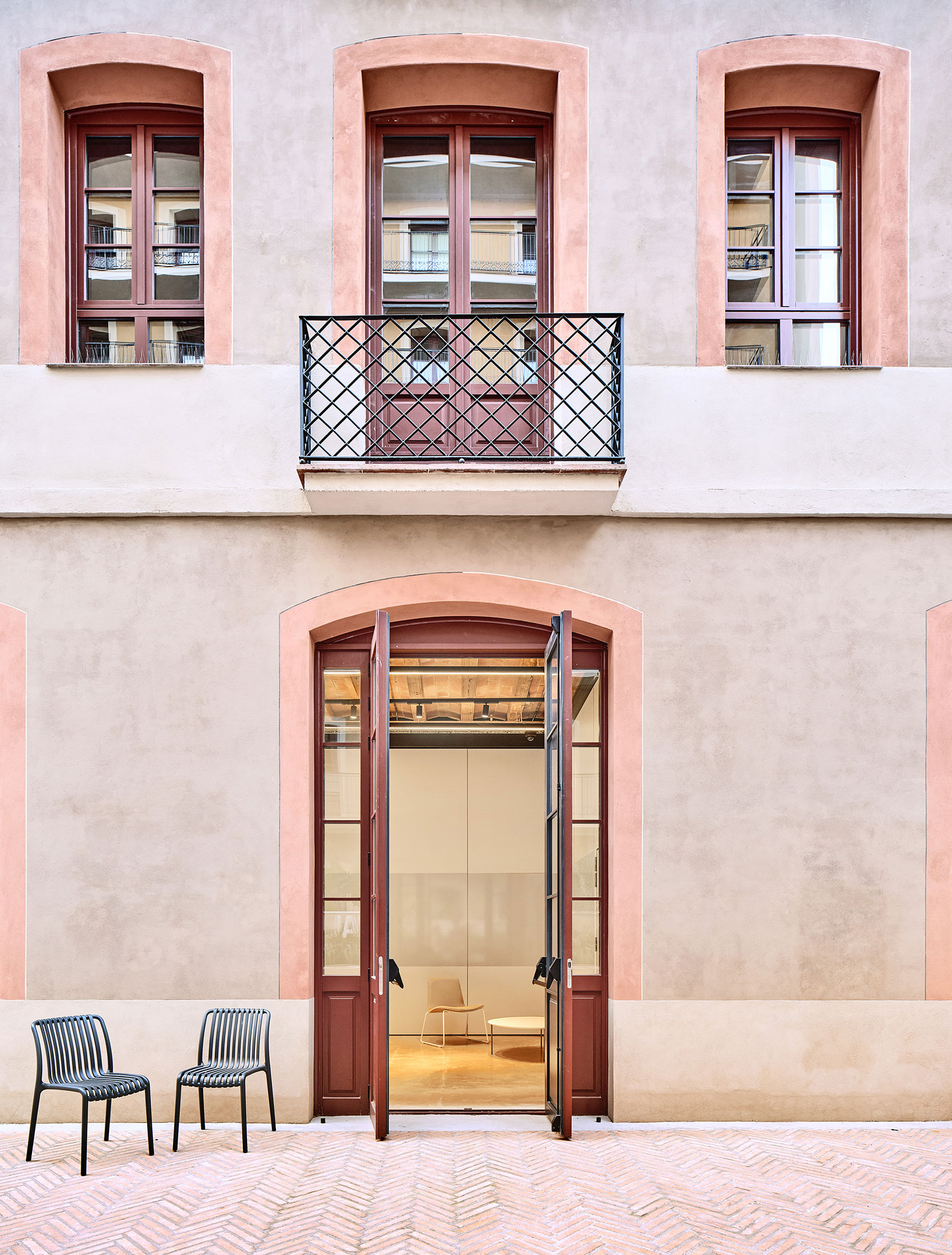The façade is dressed thanks to a meticulous restoration that reveals the minimalist polychromatic beauty of the original stucco. Inside, the proposal bares the walls and shows alive the brick walls and wooden beams, which are reinforced with dark gray painted steel, thereby influencing the use of materials in monochromatic tones for the meeting rooms. Looking towards the roof, the remains of the layers that were generated with the use of its occupants are also observed, revealing the history of the building and facilitating access to the facilities.
The renovation presents a highly energy-efficient building, reaching the maximum "A" rating. To further improve its efficiency, 32 photovoltaic panels have been installed.

Bofill Foundation Headquarters by GCA Architects. Photograph by José Hevia.
Description of project by GCA Architects
Located in Barcelona's Eixample neighborhood, the refurbishment project transforms an old factory into diaphanous office spaces, adapting the building to the highest standards of comfort, aesthetics, functionality, and energy efficiency.
GCA Architects regards projects like these as thrilling opportunities to unveil the layers of history embedded in the city.
Built-in 1850, the 21x21m block stands as a testament to the industrial architecture of its time, representing a protected heritage example.
The design process began with a meticulous exploration of which building elements should be preserved and restored, carefully peeling away layers accumulated from decades of renovations. This approach allowed the essence of the building's character to emerge, highlighting its original structure.

Bofill Foundation Headquarters by GCA Architects. Photograph by José Hevia.
The new additions not only respect the existing but also stand in contrast to it, creating a clear distinction between the old and the new. An example of this strategy is the brick walls and wooden beams, which have been reinforced structurally with steel additions painted dark grey. Materials with neutral chromatic tones have been utilized in the meeting rooms, preserving the prominence of the original features.
The rhythm of the structure and windows of the existing building is emphasized by the transversal insertion of the technical lighting and installations. Through the superimposition of layers with different yet harmonic aesthetics, users can literally read the history between the lines formed on the ceiling.
Owing to the nature of the collaborative and flexible work of the client, the design brief called for flexible spaces that can transform to accommodate various scenarios.

Bofill Foundation Headquarters by GCA Architects. Photograph by José Hevia.
A series of movable panels and curtains allow for the free configuration of a 250-sim multipurpose event space on the ground floor. The central area of this space features a retractable projection surface, enabling its transformation into a screening room.
The existing staircase acts as a connecting thread, linking the upper co-working floors with the ground floor area, which comprises the kitchen facilities, reception area, and garden. The meticulous restoration of the façades unveils the minimalist polychromatic beauty of the original stucco.
The renovation has transformed the old factory into a highly energy-efficient building, achieving the highest energy efficiency rating, an A rating. In order to further improve its efficiency, 32 photovoltaic panels have been installed, which cover a significant portion of the building's energy expenses.
This transformative refurbishment project not only revitalizes a historic building but also celebrates the dynamic interplay between past and present, harmoniously weaving together architectural heritage and contemporary design.




















































